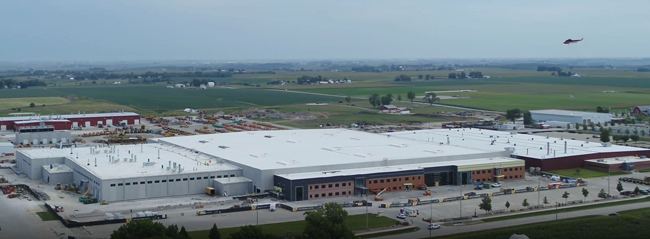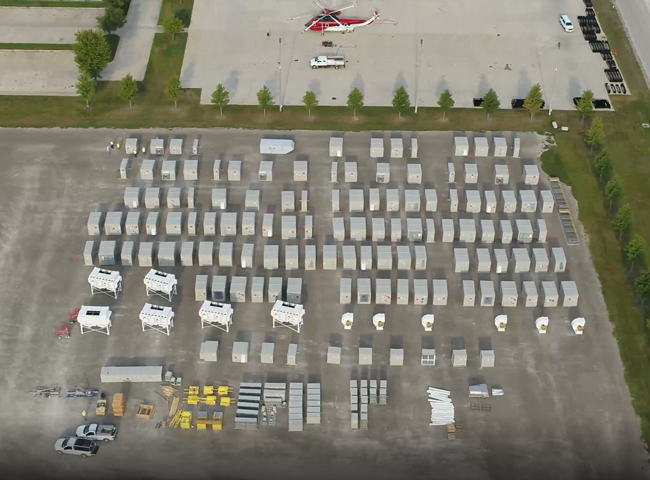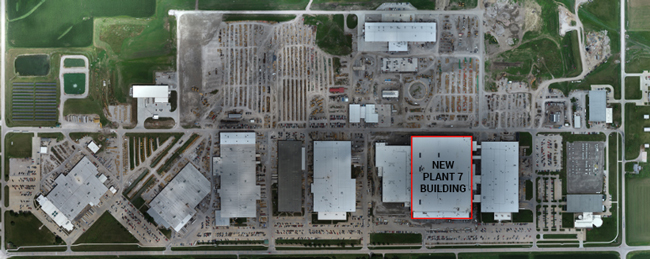
How do you place 31 roof top units in two days on a building spanning 12-acres? With the help of a Sikorsky S61N helicopter and Project Engineer Jose Caro.
Vermeer Corporation of Pella, Iowa, manufactures high-quality industrial and agricultural equipment with world-wide distribution. On July 18th, 2018, a class EF 3 tornado barreled its way through Pella and demolished two of their seven buildings, plants 5 and 6. Mortenson is partnering with Vermeer to replace what was lost, while expanding production capacity and increasing efficiencies and product flow.
As part of the 525,000-sf campus expansion, known as Plant 7, Vermeer made the decision to invest in conditioned air, which will contribute to employee comfort, productivity and retention. To meet this need, 31 individual units that will provide heating, ventilation and conditioned air were installed on the roof of Plant 7. Traditionally, a crane would be used to install these units, but the substantial footprint of Plant 7 – almost 12 acres – required some out of the box thinking in efficiently executing the installation.

We sat down with Jose Caro, Mortenson’s project engineer to get an insider perspective of how the team came together to develop a lean execution plan.
Q: What was unique about this installation?
A: When you see construction sites in urban areas, you typically find large tower cranes. Those work great on sites with a small footprint, but the new Plant 7 has a significant horizontal footprint where a typical tower crane wouldn’t have the reach to efficiently place the units.

The Vermeer campus is referred to as “The Vermeer Mile”, as the campus spans one mile corner to corner. The area where the new HVAC units were placed on the new Plant 7 building, is approximately 12 acres.
Q: What was the resolution?
A: Even with the largest, most efficient crane available, it would have taken weeks to complete the installation, which would have put the schedule at risk. The team proposed using a helicopter to lift and set the units on the roof. In a matter of two days,138 different parts with a combined weight of approximately 520,000 pounds were picked-up and set using the helicopter.
Q: How did the team plan for this process?
A: This would not have been possible without the preplanning, collaboration, and alignment by all parties. Trade partner input was essential in coordinating and executing the work seamlessly and also helped address potential challenges and safety concerns. To improve workflow, the team structured the pick/setting sequence by organizing similar units together. Having repetition with similar units provided the team on the ground and the team on the roof consistency with regard to tool utilization and equipment installation.
The larger rooftop units placed on the New Plant 7 building had an installed weight of 20,000 pounds each. Since the helicopter has a lifting capacity limit of 10,000 pounds, each unit was spilt-up in pieces and hoisted separately in smaller loads, called picks. In total, the team did 138 picks with an average turnaround time of only 5 minutes, so it was a very fast moving process.
“Like a waltz, the helicopter and team was choreographed to a tee,” said Vince Newendorp, Vermeer Vice President. "CHI Aviation was great to work with and experts in their field. All of the preflight planning, quality checks, and coordination by the team paid off in the big way. It was fun to watch how the plan came to fruition. It was a spectacular day!”
